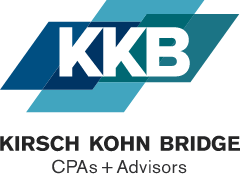Relevant financial information
Financial statements are a must-have for any organization. The balance sheet reveals how much its assets and liabilities are worth based on historic costs. The income statement tells investors and lenders how profitably and efficiently the company has performed during the accounting period. The statement of cash flows details sources and uses of cash from operating, investing and financing activities. This information helps company insiders — as well as lenders and investors — make better-informed business decisions.
Lenders and investors monitor the financial condition of companies in their portfolios on an ongoing basis. They’re particularly focused on industry sectors that are susceptible to market fluctuations, such as real estate, construction, restaurants and retail. Business owners should be prepared to respond to changes in their stakeholders’ reporting requirements if the economy gets tough or simply changes.
Levels of assurance
While financial statements can be prepared in-house, lenders and investors typically prefer reports that are prepared by outside accounting firms. CPAs offer the following three types of historical financial statements under U.S. Generally Accepted Accounting Principles (GAAP):
1. Compiled statements. These provide no assurance that the financial statements are accurate, complete and comply with GAAP.
2. Reviewed statements. These provide limited assurance that the financial statements are accurate. Typically, your accountant will review the statements to ensure that obvious errors or misstatements are corrected.
3. Audited statements. These provide reasonable assurance that the statements are free from material misstatement and conform to GAAP. Audits are seen by many as the “gold standard” in financial reporting.
In some cases, compiled financial statements — the option that provides the lowest level of assurance — might suffice. But when a stakeholder decides to manage risk more closely, it could require reviewed or audited statements. As the level of assurance increases, so too can the associated cost to prepare the financial statements. A close partnership between your company’s accounting department and its CPA firm is critical to minimizing the cost and lead time associated with preparing financial statements.
In addition to the types of statements lenders and investors may request, the frequency of statement production also may change. For example, they may request interim statements (typically quarterly or mid-year) that summarize a reporting period of less than a full financial year.
What’s right for your business?
Financial statements provide a wealth of data and insight into what drives your company’s revenue, profits and value. Above all, solid financials demonstrate to lenders and investors that management is proactively monitoring financial performance. Contact us to determine what level of assurance and frequency is appropriate for your company based on its current needs.
© 2024
For more helpful tax and accounting articles, or to sign up for our newsletter, please visit our KKB Insights page. If you have any questions, please contact us.




If your business has co-owners, you probably need a buy-sell agreement
/in Tax/by KKB CPAsFor most business co-owners, the value of their business shares comprises a big percentage of their estates. Having a buy-sell agreement protects co-owners and their heirs and helps avoid hassles with the IRS. Continue Reading If your business has co-owners, you probably need a buy-sell agreement
Consider borrowing from your corporation but structure the deal carefully
/in Tax/by KKB CPAsClosely held corporation owners: If you need money for personal expenses like a new car or home improvements, consider borrowing from the business. But follow these tips to avoid adverse tax consequences. Continue Reading Consider borrowing from your corporation but structure the deal carefully
SECURE 2.0: Which provisions went into effect in 2024?
/in Tax/by KKB CPAsNow is the time to get up to speed on 2024 SECURE 2.0 changes. Here are several to consider. Continue Reading SECURE 2.0: Which provisions went into effect in 2024?